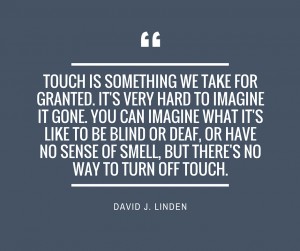When it comes to branding, we’re all very familiar with the visual variety. One needs only imagine the iconic typography of Moët & Chandon, Godiva, or the instantly recognisable Rotary watch logo.
However, as marketers struggle to break out from the clutter, luxury brand owners have come to realise that visual systems by themselves have limitations.
Imagine the soft touch of brushed steel, or gently running your fingers on a genuine leather case. Imagine pulling the end of that perfect silky bow to release the delicate smell of chocolate, or the reassuring weight of that exquisite perfume bottle in your hand, or taking a bottle of the finest single malt whiskey from the carefully-crafted wooden box. Nothing quite like it, is there?
 Psychological studies have revealed conclusive ties between use of non-visual sensory stimuli and human behaviour. Take touch, for example. Research shows that engaging the sense of touch influences sales in a positive manner (1) (2). The more consumers handle a product, the more likely they will purchase that product.
Psychological studies have revealed conclusive ties between use of non-visual sensory stimuli and human behaviour. Take touch, for example. Research shows that engaging the sense of touch influences sales in a positive manner (1) (2). The more consumers handle a product, the more likely they will purchase that product.
Some companies have come to realise that they already use various sensory identity elements in their branding. However, more often than not such elements fail to translate through to the packaging piece, resulting in failure to build the desired brand engagement with the customer.
Packaging that delivers a sensory experience – auditory, tactile, visual, or olfactory- is as powerful as the brand itself. But bridging the gap between the brand and the packaging experience to harness the power of sensory packaging requires a clear understanding of how sensory branding can deliver stronger brand preferences and increased sales.
At Hunter packaging design begins with an immersive process with our clients where the right materials and shapes are matched to the desired sensory cues that trigger a positive response in the mind of the consumer. From material research through to manufacturing and finishing processes, our signature approach to integrated sensory packaging is designed to help luxury brand owners leverage the potential that materials have to fine-tune the perceived value of the packaging design and therefore the brand.
Time and time again, global luxury brands have relied on Hunter’s deep knowledge of consumer behaviour and the manufacturing environment to meet their exacting packaging requirements, and deliver award-winning sensory packaging solutions that translate into stronger brand connections and increased sales.
(1) (Saastamoinen, 2012) (2) (Klatzky & Peck, 2012)

